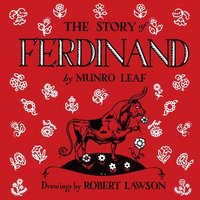We are privileged to feature Holly Thompson for our Meet the Storyteller here in GatheringBooks this November and December. Interview Wednesday is being hosted this week by the extremely talented Uma Krishnaswami in Writing with a Broken Tusk.
Holly is a long-time resident in Japan and has been described as an “artist of the cross-cultural landscape” by Kris Kosaka of The Japan Times Online. What does it mean, Holly to be such an artist? Do you think that this title comes with some expectations from your readers/followers?
It’s a lovely title, but actually I think it’s inevitable that a writer who operates in two cultures as different as the U.S. and Japan will delve into cross-cultural matters either directly or indirectly. Writers are products of their environments, including the languages and customs that surround them. Having lived so many years in Japan, I have an insider/outsider relationship with both the U.S. and Japan. As for expectations, I think there is always a certain amount of doubt that someone without Japanese blood can write authentic stories of Japan, but hopefully people will begin to realize that there is, in fact, significant diversity in Japan, and that people of all sorts of backgrounds write from within Japan.
In an interview done by SWET [Society of Writers, Editors & Translators], Avery Udagawa mentioned that Holly has lived in the Kamakura-Yokohama area since 1998 (source here). This would mean that Holly has lived in Japan for 13 years now.
At which year would you say that you have adjusted to life in Japan? At what point did you say that Japan was home to you and your family?
Actually I’ve lived in Japan for over 16 years—thirteen years since moving with our children 1998, and three years before children in the 1980s. Adjustment was incremental, and if I look back to years when I probably thought I’d acclimated, I can see how naive I was then about so many different things. But in terms of comfort level, I would say that it began to feel more solidly like home once our children were both truly bilingual, after they’d been in Japan for two or three years.
In 2008, Here and There Japan interviewed Holly and I smiled in noting that one of the things that surprised Holly in her first few days in Japan was the “cockroaches.” Would you say that you have gotten used to the roaches by now? How about food? What are some of your favorite Japanese food?
I will never get used to cockroaches. They are large and very fast in Japan, and they like to surprise me. You can kill them and they will rise again…the quintessential zombie. There is nothing quite like a midnight cockroach whacking battle with a slipper to get the adrenaline going. Now we live in a new house so thankfully I have fewer sightings. For many years, though, we lived in an old house with many cracks and openings, and the weather, and just about any critter that wanted to enter, could. Everyone wanted in—geckos and lizards, cockroaches, huge spiders, ants, even slugs.
And after that you want me to talk about food??
Okay, just a moment…still trying to stop thinking about cockroaches…
(Myra: pretty ingenious, huh? roaches and delicacies – there’s a rhythm there somewhere)
Hmmm, basically, I love Japanese food. Just about any kind of donburi, the delicate soups, traditional wagashi sweets, nabe stews, the different ways of preparing fish, the eggplant and sweet potato dishes, chirashi zushi…I could go on and on.
I’ve seen in most interviews with you how taken you are by Allen Say’s Grandfather’s Journey, The Story of Ferdinand by Munro Leaf, and Robert McCloskey among others (source here) – I’d like to know if these are also the books that you have read to your children as they were growing up? What other books did they seem to enjoy and which you loved reading with them?
Yes, we read these books. They loved all of Allen Say’s books, especially after they had a chance to meet him and share their bicultural experiences with him. When they were small, we read both Japanese and English-language picture books. We sought out books set in Asia, books of two cultures, books with science, all kinds of books. We spent lots of time in libraries here in Japan and in the States in summers where we often visited a librarian friend who gave us great recommendations. Our suitcases were always full of books when whenever we returned to Japan. My daughter loved A Chair for my Mother and many other Reading Rainbow books. They both loved Sayonara Mrs. Kackleman and I could probably recite the text to you. And I recall our son dressing up as Harry Potter for Halloween and no one in Japan, English speakers or not, knowing who Harry Potter was. Yet.
You also seem to be a child of the sea, Holly, since you have mentioned that you grew up near the shore in New England, and that you usually start your day by running (source here) – would you say that this has served as an inspiration for your picture book The Wakame Gatherers? (click here to be taken to a detailed interview done by Avery Udagawa on Holly Thompson and The Wakame Gatherers for SWET – Society of Writers, Editors & Translators).
I grew up near the coast in Massachusetts and loved tide pooling as a kid. I loved the vast saltmarshes off of Northern Massachusetts, and the beaches and rocky shores of Cape Ann. Learning about local flora and fauna was a big part of my upbringing.
The Shonan coast where I’ve lived for most of my time in Japan is quite different, and I’ve loved taking the time to learn about it, discovering what turns up when tide pooling here (amazing anemones, sea slugs, octopus…), and in the case of seaweeds, letting my curiosity lead to a story. Seaweed gathering is still a big part of the coastal Japan lifestyle, and I have always loved the sight of wakame drying in in winter winds along the beaches near where I live and and where I run almost every morning.
In a feature done by The Japan Times Online, Holly was cited in saying:
“When I first moved here, I was puzzled; I seemed to be using the right vocabulary to talk about education matters — learn, study, teach, instruct, homework — but the words meant completely different things to me than they did to Japanese teachers and parents. Gradually, I cast off my assumptions and began to gain an understanding of the systems and expectations here.”
I had to cite that in full since I also had the same experience during my first few years here in Singapore in the university. Could you share with us how you were able to ‘cast off your assumptions’ since I am certain that it must have been a difficult task?
After a certain number of misunderstandings, some amusing and some upsetting, I began to realize that I simply had to learn the Japanese connotations for the various educational terms and accept that my concept of education was completely different from most Japanese people’s concept of education. The struggle for us was that our seven-year-old son had to learn quickly to deal with these radically different attitudes and approaches. I have come to believe that our childhood education experiences play an enormous role in our sense of identity and in the way we view the world. In Japan, where there is often a set way to do anything, and extra emphasis is placed on consensus, conformity and hierarchy, there is understandably a completely different approach to education from the U.S., where a diversity of views and individualism is encouraged. Ultimately, here in Japan, we settled on supplementing the Japanese curriculum with content and learning methods that were more inquiry-based and international in scope. We created a cooperative after-school program that covered all sorts of subjects in English for English-speaking children in Japanese schools, and for a number of years, this group sustained us and helped each of our children develop a positive sense of identity.
As a lecturer in the university where you teach and talk about writing, there might be a dissonance between the actual creative process that is more organic (as evident in the process itself of writing), whereas university/academic life requires greater structure and system – how do you manage to combine both?
Actually, I’ve been quite lucky at my university, teaching courses for high-level students, and courses in both creative as well as academic writing. My schedule has always left me room for creativity and time to write my novels. But there is never quite enough time for me to, in addition, focus on academic publications. I think this is a typical conflict for writers in academia. The ideal is to have a position at a university that recognizes creative writing as an art form and doesn’t try to squeeze it or the teacher of creative writing into a rigid academic mold. Researching and writing novels is hugely time-consuming and intellectually demanding.
I have also read a few of your blog posts where you do some volunteering work to help out in the aftermath of the tsunami. While undeniably tragic, it has also shown such glowing traits and qualities among the residents of Japan such as resilience, a sense of calm and dignity, and integrity- the likes of which the world could learn a few things from. What are the other proverbial silver linings from the wake of the tsunami? How else could people be of help?
I would be hard pressed to find any silver linings from the grim tsunami disaster. So many lives, homes, towns, businesses, farms, fisheries, families, communities, wildlife habitats, and on and on have been destroyed. My time volunteering in Tohoku has been sobering. I ache for northern Japan and the long-term implications of this disaster. Of course, it is encouraging to see so many Japanese becoming more activist and volunteering in the face of this new reality, but I worry, now that much of the debris has been cleaned up, and news of Tohoku is heard less often, that people in Tokyo and western Japan will begin to forget about the hardships up north. I think it is vitally important to keep writing about and sharing news of the lands and people affected by March 11, and to encourage people everywhere to actively help those around them who are struggling. My Tomo anthology project is one project to help remind people that Tohoku will need support for many years to come.
Thank you so much Holly for your time! Watch out for Part Two of our conversation with Holly over the next two weeks.












